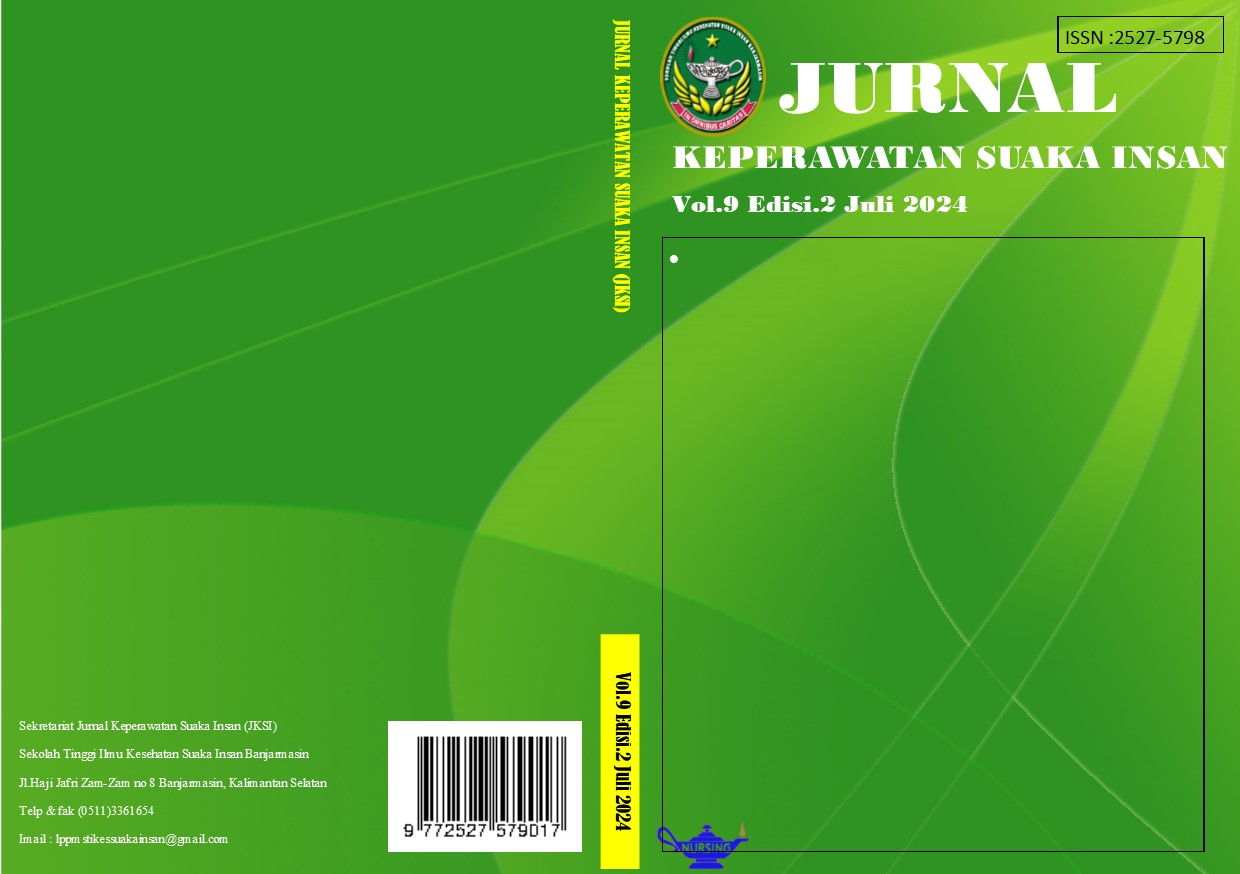CORRELATION BETWEEN CHEST PAIN AND PHYSICAL ACTIVITY IN PATIENTS WITH CORONARY HEART DISEASE: A STUDY AT H.BOEJASIN REGIONAL GENERAL HOSPITAL, TANAH LAUT REGENCY
DOI:
https://doi.org/10.51143/jksi.v10i1.894Keywords:
Chest Pain, Coronary Heart Disease, Global Physical Activity Questionnaire, Numeric Rating Scale, Physical ActivityAbstract
Chest pain is a primary symptom in patients with coronary heart disease (CHD), often limiting physical activity and reducing quality of life. This study aimed to identify the relationship between chest pain intensity and physical activity among CHD patients at H. Boejasin District Hospital, Tanah Laut. A quantitative correlational design was employed, involving 94 patients selected by purposive sampling. Chest pain was measured using the Numeric Rating Scale (NRS), and physical activity was assessed with the Global Physical Activity Questionnaire (GPAQ) from WHO. The results showed that most respondents experienced moderate chest pain (78.7%) and engaged in light physical activity (74.5%). Spearman's rho test revealed a significant correlation between chest pain and physical activity (correlation coefficient 0.649; p < 0.05), indicating that higher levels of chest pain are associated with lower levels of physical activity. These findings highlight the importance of optimal pain management in CHD patients to support increased physical activity and prevent further complications. The use of standardized instruments such as NRS and GPAQ is crucial in nursing practice to monitor patients’ conditions comprehensively.
Downloads
Published
How to Cite
Issue
Section
License
Copyright (c) 2025 Solikin Solikin, Zea Maysita, Nurhikmah Nurhikmah

This work is licensed under a Creative Commons Attribution 4.0 International License.
Authors who publish with Jurnal Keperawatan Suaka Insan (JKSI) agree to the following terms:
1) Authors retain copyright and grant Jurnal Keperawatan Suaka Insan (JKSI) right of first publication with the work simultaneously licensed under a Creative Commons Attribution License CC BY that allows others to remix, adapt, and build upon the work with an acknowledgment of the work’s authorship and initial publication in this journal.
2) Authors are able to enter into separate, additional contractual arrangements for the non-exclusive distribution of the journal’s published version of the work (e.g., submit it to an institutional repository or publish it in a book), with an acknowledgment of its initial publication in this journal.
3)Authors are permitted and encouraged to post their work online (e.g., in institutional repositories or on their website) prior to and during the submission process, as this can lead to productive exchanges, as well as earlier and greater citation of published work (see the discussion about The Effect of Open Access).











